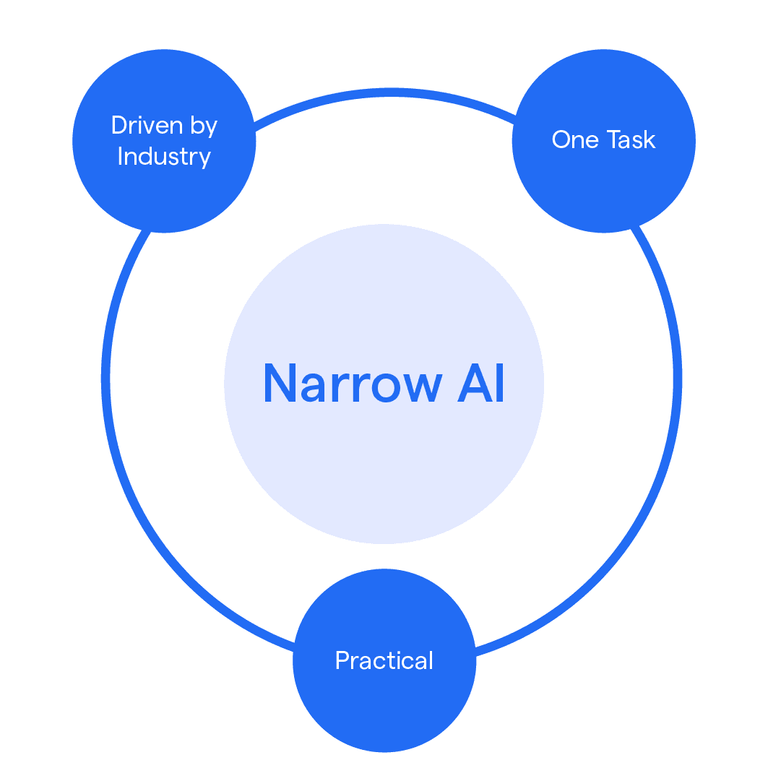Narrow AI also known as weak AI refers to artificial intelligence systems that are designed to perform specific tasks or solve specific problems. Unlike general AI which aims to possess human-like intelligence across a wide range of domains narrow AI focuses on excelling at a singular task.
The functioning of narrow AI involves several steps. Firstly the system is trained on a specific dataset relevant to the task it needs to perform. This dataset helps the AI algorithm learn patterns relationships and rules necessary for making accurate predictions or decisions.
The training process usually involves supervised learning where human experts label the data with the correct answers. The AI system then generalizes from this labeled data to make predictions on new unseen data.
Once the training is complete the narrow AI system is deployed to perform its designated task. It inputs new data.
TYPES OF NARROW AI
Virtual personal assistants: These AI systems such as Apple's Siri Google Assistant or Amazon's Alexa are designed to perform tasks and provide information based on voice commands or text inputs. They can answer questions set reminders control smart home devices and perform other simple tasks.
Recommendation systems: These AI systems use algorithms to analyze user preferences and provide personalized recommendations. Examples include movie recommendation systems on streaming platforms like Netflix or music recommendation systems on platforms like Spotify.
Fraud detection systems: These AI systems can identify patterns and anomalies to detect fraudulent activities in financial transactions insurance claims or credit card usage. They analyze large amounts of data to flag suspicious behavior and reduce the risk of fraudulent activities.
Autonomous vehicles: Narrow AI is used extensively in self-driving cars where AI algorithms analyze sensor data to make real-time decisions about vehicle control navigation and following traffic regulations.
Image and voice recognition: Narrow AI is frequently used for tasks like image recognition and voice transcription. AI-powered systems can analyze images to identify objects faces or gestures and can transcribe spoken words into written text.
Natural language processing (NLP): NLP-based AI systems understand and process human language to perform tasks like language translation sentiment analysis or chatbot interactions. They analyze the context and meaning of text or speech to generate appropriate responses.
Medical diagnosis systems: AI systems are being developed to assist in medical diagnostics by analyzing patient data medical images and other relevant information. These systems can provide suggestions or predictions based on patterns identified in medical data.
These are just a few examples of the various narrow AI applications being developed and deployed in different domains. Narrow AI systems offer focused solutions and can be highly effective within their specific areas but they lack the broader capabilities or cognitive abilities of general AI.
